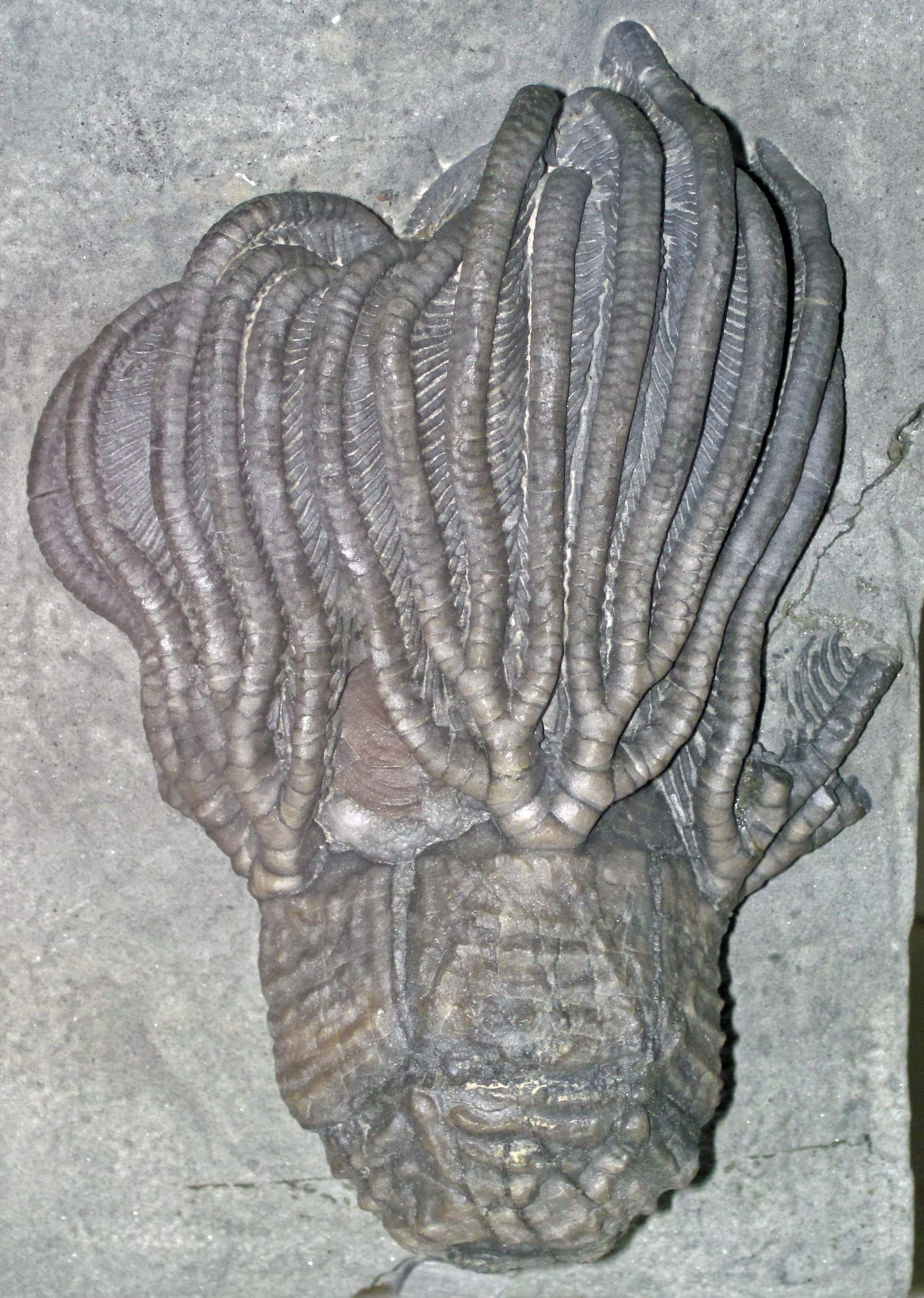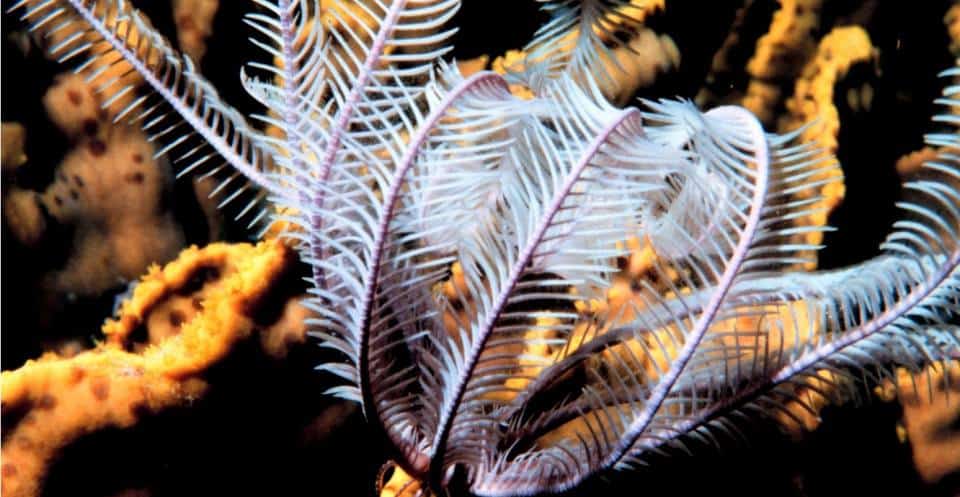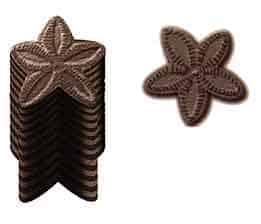Though they’re known as sea lilies, crinoids are animals and not plants. Think of them as starfish-on-a-stick: they are filter-feeding sea floor echinoderms, and relatively common as fossils go. Crinoids as a group aren’t extinct, but are relatively uncommon in modern oceans.

In the extraordinary picture above, you can see the crown of Platycrinus saffordi, part of the ancient Crawfordsville fauna of Indiana. This fauna is well known for its abundance of excellently preserved, articulated crinoid fossils, and contains at least 63 different species.
This particular specimen lived sometime during the upper Lower Mississippian or upper Lower Carboniferous period, around 330 to 350 million years ago. All Platycrinites are an extinct genus of Paleozoic stalked crinoids, which all went extinct around 250 million years ago.
Platycrinus saffordi certainly has some of the most intriguing features in the fossil record. It had a slender stalk crowned by a feathery array of arms, which made Platycrinus resembles a delicate flower swaying in the currents. This captivating structure isn’t just for show; the arms serve a functional purpose in capturing plankton and detritus, its primary sources of sustenance.

Most crinoid fossils are found with the stem and columnal in good condition, but fully fossilized crinoid crowns or heads (the tentacle-like thing you can see in the picture) are rare, as they tend to break apart after the animal dies and starts decomposing. Some of you might find the imagery uncannily similar to the frightening creatures from the Alien movie franchise or even the Half-Life video games from Valve.
Some crinoids have survived to the present day, although they are exceedingly rare to find. Although they look quite different from their ancient ancestors, such as Platycrinus, these extant species provide useful clues about how the extinct crinoids must have lived during the Palaeozoic and Mesozoic.

In some parts of the world crinoid fossils have become the stuff of myth and legend. In certain regions of England, the columnals that constitute their stems are colloquially known as “fairy money.” These star-shaped variants have been intertwined with the concept of the sun by ancestral communities, imbuing them with religious connotations.







